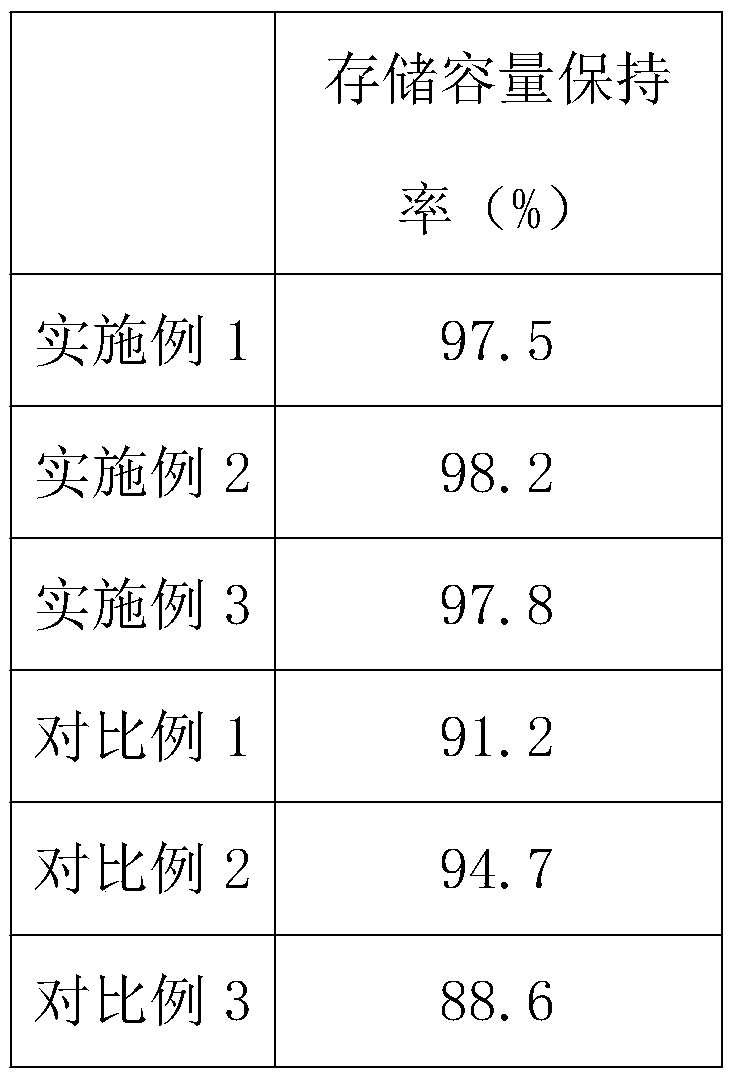Long-term storage method of lithium ion battery
A lithium-ion battery, long-term storage technology, applied in the field of long-term storage of lithium-ion batteries, can solve the problems of life performance decline, internal resistance rise, difficulty in maintaining battery life, etc., and achieve a stable effect
- Summary
- Abstract
- Description
- Claims
- Application Information
AI Technical Summary
Problems solved by technology
Method used
Image
Examples
Embodiment 1
[0033] 1) Take out the battery that has been stored for 3 months;
[0034] 2), discharge the battery to the discharge cut-off voltage, and the discharge cut-off voltage is 2.7V;
[0035] 3) At 30°C, the battery is subjected to pulse charge and discharge cycles for 10 times between the discharge cut-off voltage and the first predetermined voltage, the first predetermined voltage is 2.67V, the pulse current is 0.05C, the pulse time is 60s, and the interval 10s;
[0036] 4) At 35°C, the battery is subjected to pulse charge and discharge cycles for 10 times between the discharge cut-off voltage and the second predetermined voltage, the second predetermined voltage is 2.65V, the pulse current is 0.02C, the pulse time is 30s, and the interval 10s;
[0037] 5) At 10°C, charge the battery with a constant current to the third predetermined voltage, then charge and discharge 5 times at 0.5C between the third predetermined voltage and the fourth predetermined voltage, and then charge a...
Embodiment 2
[0043] 1) Take out the battery that has been stored for 10 days;
[0044] 2), discharging the battery to the discharge cut-off voltage, the discharge cut-off voltage is 2.75V;
[0045] 3) At 35°C, the battery is subjected to pulse charge and discharge cycles for 10 times between the discharge cut-off voltage and the first predetermined voltage, the first predetermined voltage is 2.7V, the pulse current is 0.1C, the pulse time is 20s, and the interval 5s;
[0046] 4) At 40°C, the battery is subjected to pulse charge and discharge cycles for 10 times between the discharge cut-off voltage and the second predetermined voltage, the second predetermined voltage is 2.65V, the pulse current is 0.05C, the pulse time is 10s, and the interval 5s;
[0047] 5) At 10°C, charge the battery with a constant current to the third predetermined voltage, then charge and discharge 5 times at 0.5C between the third predetermined voltage and the fourth predetermined voltage, and then charge and dis...
Embodiment 3
[0053] 1) Take out the battery that has been stored for one month;
[0054] 2), discharging the battery to the discharge cut-off voltage, the discharge cut-off voltage is 2.75V;
[0055] 3) At 35°C, the battery is subjected to pulse charge and discharge cycles for 10 times between the discharge cut-off voltage and the first predetermined voltage, the first predetermined voltage is 2.7V, the pulse current is 0.05C, the pulse time is 30s, and the interval 10s;
[0056] 4) At 40°C, the battery is subjected to pulse charge and discharge cycles for 10 times between the discharge cut-off voltage and the second predetermined voltage, the second predetermined voltage is 2.65, the pulse current is 0.02C, the pulse time is 20s, and the interval is 5s ;
[0057]5) At 5°C, charge the battery with a constant current to the third predetermined voltage, then charge and discharge 5 times at 0.5C between the third predetermined voltage and the fourth predetermined voltage, and then charge an...
PUM
 Login to View More
Login to View More Abstract
Description
Claims
Application Information
 Login to View More
Login to View More - R&D
- Intellectual Property
- Life Sciences
- Materials
- Tech Scout
- Unparalleled Data Quality
- Higher Quality Content
- 60% Fewer Hallucinations
Browse by: Latest US Patents, China's latest patents, Technical Efficacy Thesaurus, Application Domain, Technology Topic, Popular Technical Reports.
© 2025 PatSnap. All rights reserved.Legal|Privacy policy|Modern Slavery Act Transparency Statement|Sitemap|About US| Contact US: help@patsnap.com

